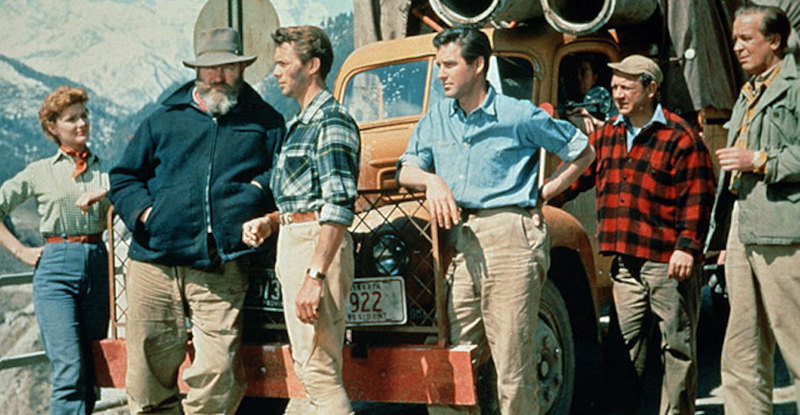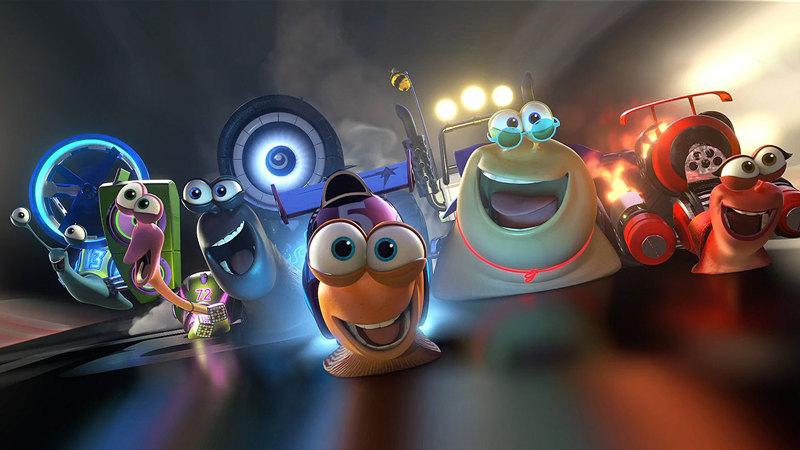No, “Ice Princess” is not about that girl you dated in high school. It’s a lightweight Disney teen drama.
The “Ice” part comes in because the main character in the story is a teenage girl who goes from being merely a smart, studious high-school student to a glamorous ice-skating competitor. The “Princess” part comes in because it’s a Cinderella story of rags to riches (in this case, academics to athletics). Besides, “The Princess Diaries” were a popular pair of movies for Disney, and the company undoubtedly wanted to capitalize on the name recognition.
I said a moment ago that “Ice Princess” is a teen drama. That isn’t necessarily so, of course. It’s part comedy, and it’s a film meant for the whole family, not just teens. But it features a teenage girl, and it’s about ice skating, and it’s rated G, and it’s mostly serious, so my guess is that it’s going to appeal mainly to an audience of younger teenage girls. I could be wrong. I mean, I’m sure there are quite a few twenty-year-old males who get tired of watching crazed maniacs slicing heads off people or viewing the same cars being blown to smithereens time and time again. But I don’t know. Certainly, there’s nothing offensive about “Ice Princess” that should put off anyone in the family, young or old, except those few with a low tolerance for sugar.
It’s just that the movie is so highly predictable. From the very title you know pretty much what’s going to happen in the story going in. But, heck, I know every line of dialogue in “Casablanca,” and it doesn’t stop my enjoying the picture over and over. So, it’s not so much what happens in “Ice Princess” that we’re looking for here; it’s how it all unfolds. Unfortunately, it unfolds at the speed of an ice pond melting, with characters so stereotyped and dull it’s hard to imagine a screenwriter having to do more to flesh them out than cut pictures from a teen magazine.
The plot is formulaic. A very pretty and very smart high school senior who doesn’t see herself as either pretty or smart, Casey Carlyle (Michelle Trachtenberg), is encouraged by her science teacher to apply for a Harvard scholarship. As a part of the scholarship process, Casey must develop a personal project, which she decides to do on the physics of motion as applied to ice skating, a casual hobby of hers. In studying ice skating further, Casey develops a love for it, and eventually she has to decide between a full scholarship worth tens of thousands of dollars to one of the nation’s most prestigious schools or pursuing a newfound goal of perhaps, maybe, possibly if she’s lucky, becoming an Olympic ice-skating contender. Against the advice of her mother (Joan Cusack) and her teacher and all that’s logical and right and sensible in the world, guess what she chooses.
I could accept the characterization of Casey as a shy, overly studious girl who wants to follow her own aspirations and not those of a demanding parent trying to live her own life through her daughter, trite though it may sound. People should be encouraged to follow their dreams, as the songs say, and do what they think will bring them the most joy and contentment in life. But surely within reason. I was reminded while watching “Ice Princess” of all the students I had over the years who told me they weren’t trying to get good grades in high school or even graduate because they were going to be professional basketball or football stars when they grew up. This always seemed to me the equivalent of a man or a woman giving up a high-paying job in order to devote more time to winning a state lottery. I was also reminded of the very funny W.C. Fields’ movie “The Bank Dick,” about a fellow so lazy he supported himself and his family by cutting out coupons and entering contests. Fields was making a joke. But Disney’s movie, while seemingly benign on the surface, appears to me irresponsible in encouraging young, impressionable teens to go against the advice of parents, teachers, counselors, whomever, in the pursuit of near-impossible aims.
Anyway, questionable themes or no, “Ice Princess” is largely square and humdrum and, as I say, inoffensive to the max. It’s typically Disney in that even at a high school party where literally hundreds of kids fill a house and garden on a Saturday night, they are all beautiful, well dressed, mannerly, orderly, and racially well-integrated, with nary a profane word or a can of anything stronger than a soft drink in sight. One fellow accidentally breaks a window, which I guess in a Disney world is pretty rough behavior. The fact is, Disney movies haven’t moved much beyond the fifties’ climate of “Ozzie and Harriet” and “Father Knows Best.” Visiting “Ice Princess” is like stepping into “Pleasantville.”
Meanwhile, things are so routine we can guess every action a cliché in advance. Casey wants to be an ice skater, and a friend of hers, Gen Harwood (Hayden Panettiere), who is an ice skater, wants to be a normal student. Naturally, Gen’s mother (Kim Cattrall), a former Olympic skater, wants her to be an Olympian, too. According to schedule for a teen movie, parents must either be horrible or nonexistent, and in this case both Cusack’s and Cattrall’s characters are horrid, demanding, and pushy. And there are the expected mean-spirted classmates and skaters, and the expected romantic interest for the heroine in the form of a hunky, handsome older teen (Trevor Blumas) who sees Casey for the wonderful, sensitive girl she really is.
This was director Tim Fywell’s first theatrical feature after doing years of television work, and it shows. The movie comes off like an after-school special, the acting wooden, the children, especially, reciting their lines with the enthusiasm of kids in a school play. The characters change life directions in an instant, Casey becoming a championship-quality skater almost overnight. The pacing is listless. And banal, soft-rock pop tunes underscore just about every other scene. The opening sequence says a lot about what’s to come: We see Ms. Trachtenberg gliding around the ice on a frozen pond near her house, her face beaming as the music swells, her mom looking out the window and smiling from ear to ear.
“Ice Princess” is supposed to be uplifting and exhilarating, an inspirational story of determination and goal-setting and pursuing one’s yearnings no matter where they lead. As such, the movie probably works fine for the viewer who is not too demanding of anything new. Personally, I found it a very long ninety-nine minutes to sit through.
Video:
It wasn’t too long before this release that Buena Vista finally saw the wisdom in transferring their films to disc at a high bit rate. They had been doing anamorphic (enhanced) transfers for some time before. The result is that “Ice Princess” looks terrific. The screen size measures out at almost the exact dimensions of a widescreen TV, 1.78:1, and the colors are gorgeous. Definition is excellent; grain is unnoticeable; tonal balances are natural; and strong blacks make contrasts stand out. There are some very minor moiré or motion effects to be seen in closely spaced horizontal lines, but that’s common to some degree on most discs, and there is a touch of murkiness in darker areas of the screen, nothing of much concern.
Audio:
The Dolby Digital 5.1 sonics are clear and clean, but like the movie they are mundane. There isn’t much the audio has to do but reproduce bland pop music and dialogue, which it does with commendable if lackluster efficiency. A couple of noises and a note of applause toward the end of the movie seep into the surrounds, but it’s hardly anything to make one aware of the sound system at all.
Extras:
Among the extras we find the usual complement of items. The first, need I mention, is the compulsory audio commentary, this one done by actors Micehlle Trachtenberg, Hayden Panettiere, Trevor Blumas, and Kirsten Olson. They are all young, and they sound it, which I suppose is the point. Next, there are five deleted scenes in widescreen, including an alternate opening, none of them of much interest to me; and two music videos, “Reach” by Caleigh Peters and “No One” by Aly & A.J., that were of even less interest. Finally, there are twelve scene selections (with a chapter insert); Sneak Peeks at eight other Buena Vista titles; English and French spoken languages; and French subtitles, with English captions for the hearing impaired.
Parting Shots:
Disney’s 2005 “Ice Princess” should not be confused with the 1995 made-for-television musical, “The Ice Princess,” not that most people would probably notice the difference. Still, “Ice Princess” is undoubtedly meant for younger female teens, and as such it probably works just fine, sweet as it is. But I don’t think by the highest standards of moviemaking that the story, characters, direction, or themes hold up well to the scrutiny of an adult. At least, not to this adult.


